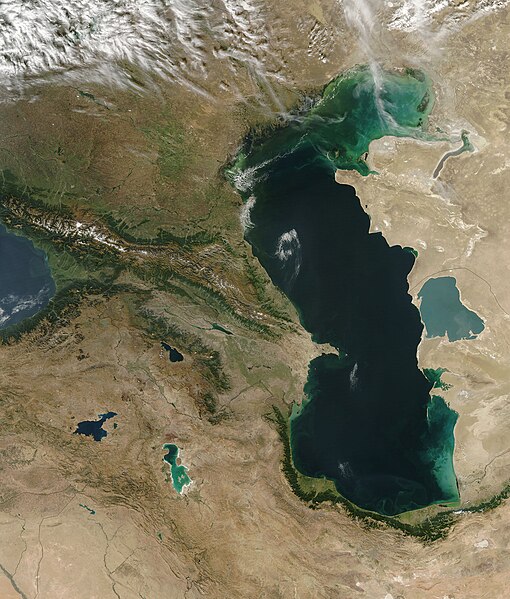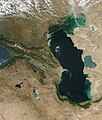Файл:Satellite image of the Caucasus-Caspian Region.jpg

Учурда көрсөтүлүүчү өлчөм: 510 × 599 пиксел Башка уруксаттар: 204 × 240 пиксел | 409 × 480 пиксел | 654 × 768 пиксел | 872 × 1 024 пиксел | 1 703 × 2 000 пиксел.
Түп нуска файл (1 703 × 2 000 пиксель, файлдын өлчөмү: 1,29 MB, MIME түрү: image/jpeg)
Файлдын тарыхы
Файлдын мурдагы нускасын көрүү үчүн тийиштүү убакыт/датаны басыңыз
| Убакыт/дата | Миниатюра | Өлчөм | Колдонуучу | Түшүндүрмө | |
|---|---|---|---|---|---|
| учурдагы | 05:44, 26 октябрь 2005 |  | 1 703 × 2 000 (1,29 MB) | Brian0918 | Caspian Sea and Georgia Sometimes referred to as the Caucasus Isthmus, the Caucasus-Caspian Region is a mixing-pot for scores of cultures. Due in part to its geographic isolation and having been in the path of numerous Eurasian migrations over the cent |
Шилтемелер
Бул файл төмөнкү баракта колдонулат:
Файлдын глобалдык колдонулушу
Бул файл төмөнкү викилерде колдонулат:
- ar.wikipedia.org сайтындагы колдонулушу
- ast.wikipedia.org сайтындагы колдонулушу
- bg.wikipedia.org сайтындагы колдонулушу
- en.wikipedia.org сайтындагы колдонулушу
- fr.wikipedia.org сайтындагы колдонулушу
- fr.wiktionary.org сайтындагы колдонулушу
- gcr.wikipedia.org сайтындагы колдонулушу
- mg.wikipedia.org сайтындагы колдонулушу
- nn.wikipedia.org сайтындагы колдонулушу
- no.wikipedia.org сайтындагы колдонулушу
- oc.wikipedia.org сайтындагы колдонулушу
- pt.wikibooks.org сайтындагы колдонулушу
- sq.wikipedia.org сайтындагы колдонулушу


